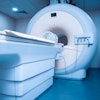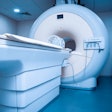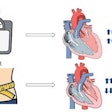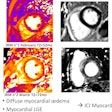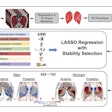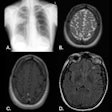Men and women with hypoactive sexual desire disorder (HSDD) -- that is, "distressingly" low sexual desire -- show dimorphic brain processing on functional MRI (fMRI), a study published on May 14 in Nature: Scientific Reports has found.
A team led by Natalie Ertl, PhD, of Imperial College London in the U.K. reported that the condition in women is likely caused by a "top-down" inhibition of the sexual response manifested in hyperactivation of the inferior frontal gyrus and lower activation in brain regions associated with lower sexual function. But men appear to have a different neurological pathway for the condition.
"[Therapies] targeted at reducing hyperactivity in higher-cortical regions or boosting activation in lower-limbic regions could improve sexual function in women with HSDD," the team noted. "In men, there may be a different model of HSDD, whereby the visual attention to the sexual cues is not effectively relayed to emotional centers involved in the sexual response."
HSDD is the most common sexual health complaint, affecting 10% of women and 8% of men, the authors explained. Previous research has suggested that in women the condition is caused by overactivity in higher-level cognitive brain regions that regulate introspection, self-monitoring, and feelings of guilt and which in turn suppress lower-level emotional/sexual brain areas that regulate emotion, reward, and sexual processing, they explained. Whether this same mechanism is at work in men has been unclear.
"[Directly] comparing the neurobiological basis of HSDD in both sexes is essential for furthering our understanding of the disorder which could lead to targeted and effective treatments and interventions," Ertl and colleagues wrote. "By examining functional brain responses in both women and men with HSDD for the first time, this study aims to advance our understanding of the neural mechanisms that govern sexual responses in these patients, with the ultimate goal of informing sex-specific therapeutic approaches."
The investigators conducted a study that included 32 women and 32 men with HSDD who underwent fMRI while viewing both sexual and nonsexual videos. Women in the study cohort tended to be younger than the men, but there were no significant differences when it came to the frequency of sexual intercourse per month, the duration of sexual relationship, depression, or anxiety. The researchers focused on fMRI findings from the amygdala, hypothalamus, insula, precentral gyrus, striatum, and thalamus (the so-called "sex network" of the brain), comparing women's and men's response to sexual videos in these areas.
Women with HSDD had significantly greater activation in limbic brain regions such as the amygdala, striatum, and thalamus compared to men with the condition, and the women showed greater activation in higher-level cortical regions such as the inferior frontal gyrus and the superior frontal gyrus. In contrast, men with HSDD had greater activation in areas within the visual cortex, such as the lingual gyrus and occipital pole, than their female counterparts.
The study suggests that although women and men exhibit similar general overall patterns of activation to visual sexual stimuli, there are key differences in the activation of limbic brain regions in women and men with HSDD.
"[Previous] fMRI studies have identified the hypothalamus, amygdala, and thalamus as regions more strongly activated in response to sexual stimuli in healthy men compared to healthy women," it wrote. "By contrast, here we found that women with HSDD demonstrate a greater magnitude of activation in these three regions than the men with HSDD … [and] confirmed that these findings were specifically in response to visual sexual stimuli, as no differences were identified in the control comparison."
The findings highlight the need for more research to be conducted regarding men with HSDD, according to the authors.
"[Our study] provides further evidence and support for the top-down theory of HSDD in women, and … suggests therapies which may target the hypoactive-limbic system may be effective at increasing positive feelings towards sex in women with HSDD," they concluded. "In addition, the comparatively lower limbic activation in the men is of interest and warrants further study."
The complete research can be found here.

